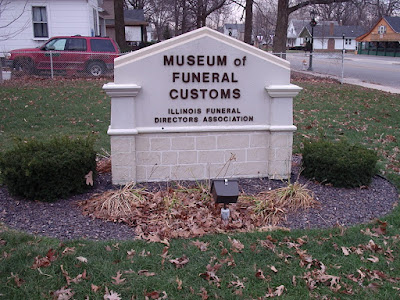
In preparation for a teen writing class around Halloween, Kate did a little research on Victorian post-mortem photography.
The 2001 Nicole Kidman movie "The Others" was Kate's first introduction to post-mortem photos. Since then, she's read a few books on the subject, and thought it was a sufficiently macabre subject to hold the interest of blasé teenagers.
One website called it "almost cliché" to find photographs or daguerreotypes of dead relatives when paging through old family albums, but it wasn't a cliché that Kate had ever stumbled upon before.
Until this past month when she popped into her computer a CD that was distributed at a family reunion over the summer. Several funeral photos featuring the recently deceased were among the wedding and baby shots, including the one accompanying this article.
Post-mortem photography became popular and then faded away just before and just after the year 1900, due mainly to the refinement of photography itself. The daguerreotype process was patented in 1839, but capturing a person's likeness remained an expensive and exclusive luxury for decades. Sitting for a photo was a rare splurge.
Still, a photo was a precious reminder of a loved one more personal and evocative than a lock of hair or an amateur sketch. And if your last chance to photograph your loved one occurred just before they were buried, what other choice did you have?
Memento mori photographers tried to make the deceased look as lifelike as possible, as if the subject had just fallen asleep in a chair or on the bed. But some photos clearly show a figure in rigor mortis with their eyes open standing fixed to a frame or leaning at a desk. Another common practice was to paint eyes into the photo over the subject's eyelids to make them look more life-like.
Family groupings where one child in the group has obviously passed on were also common, however creepy it seems to us today. Many photos also exist of parents holding their dead babies for their only portraits, which actually has become common practice once again in hospital settings for still-born or terminally ill infants.
Once photography became cheaper and more wide-spread, people began to take lots of photos on lots of occasions and the need for memorial photography "died away."


